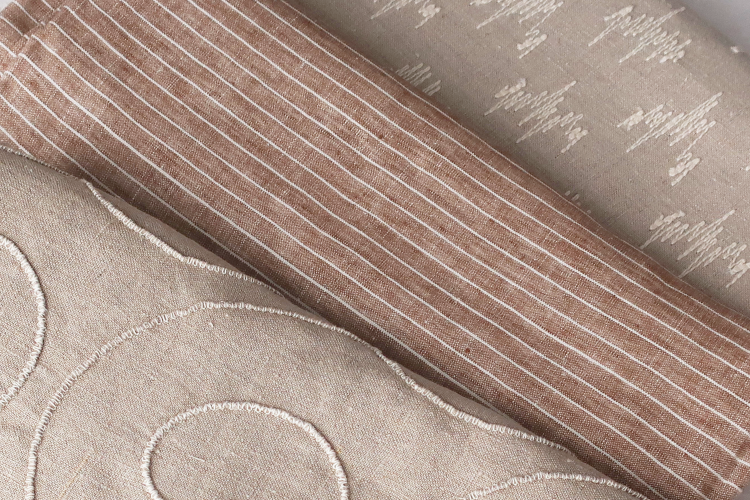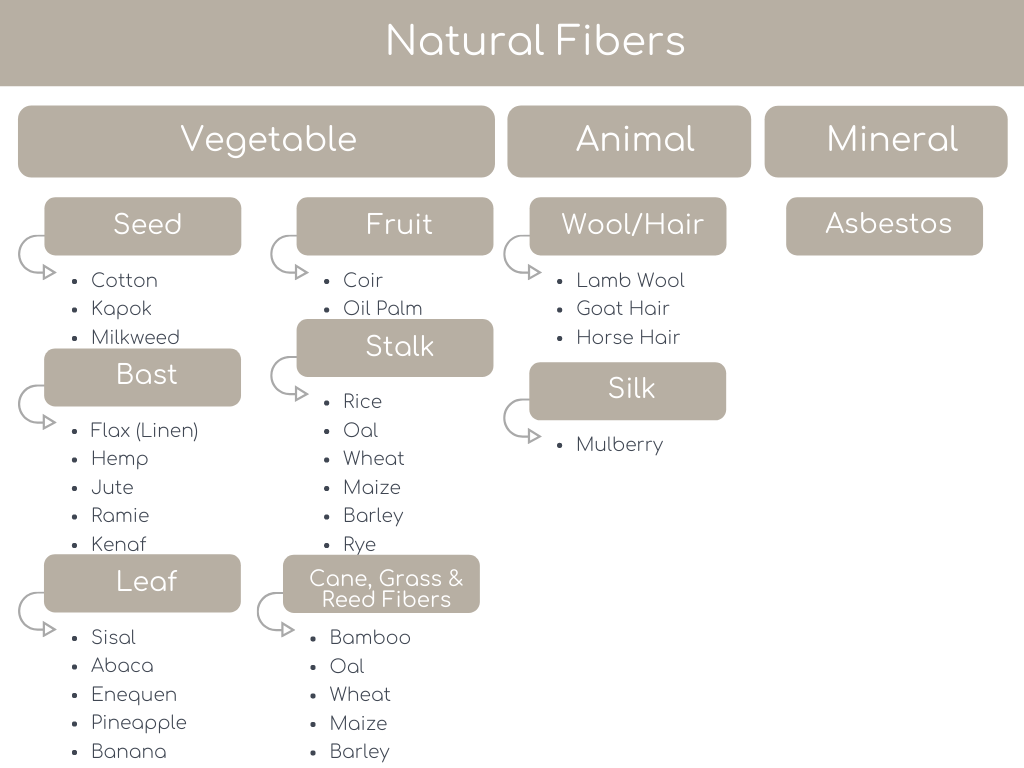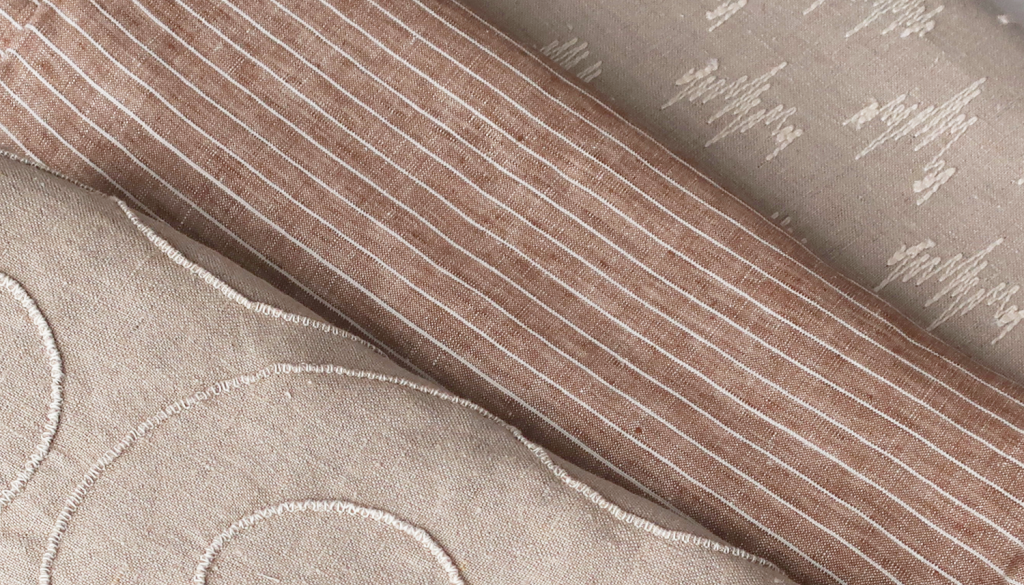Natural Fibers: Good for You and Good for the environment

All textiles are made from fiber, which can be natural or man-made. Natural fibers are made from natural raw products that can be classified according to their origin. The vegetable, or cellulose-base, class includes such important fibers as flax (linen), cotton and jute. The animal, or protein-base, fibers include wool, mohair, and silk. Here are excluded mineral fibers such as asbestos that occur naturally but are not biobased.
In terms of utilization, there are two general classifications of plants producing natural fibers: primary and secondary. The primary plants are those grown for their fiber contents while secondary plants are those where the fibers come as a by-product from some other preliminary utilization. Jute, kenaf, hemp, sisal, and cotton are examples of primary plants while pineapple, cereal, stalks, agave, oil palm, and coir are examples of secondary plants (Friedrich & Breuer, 2015).

Until the turn of the twentieth century, the only fabrics available were natural fabrics. For thousands of years they were essential to insulate us against warm and cold weather. But over the past half century, natural fibers have been displaced in our clothing by man-made fibers with names like acrylic, nylon, polyester and polypropylene. Although synthetic fibers are known for better durability and cheaper manufacturing, they are acquired from petroleum products and require a complex processing procedure, like all synthetic fabrics. Natural fibers are found naturally on our planet without being scientifically invented.
However, the environmental legislation and consumer awareness are driving the transition to a bio-based economy and models of sustainable development which offer high perspectives for natural fiber markets.
Why natural fibers are good for you and good for the environment?

Natural fibers are breathable
– Natural fabric has high absorption quality so won’t harbour bacteria and fungi, naturally repellent to mould and dirt. The moisture-wicking abilities allow ventilation through the fabric, to pull dampness away from the skin leaving you feeling dry.
– Often more comfortable against skin. Synthetic fibers like nylon and polyester don’t breathe and that can cause irritation and discomfort even for people without sensitive skin.

Natural fibers are hypoallergenic
– Natural fabrics like linen and cotton are naturally hypoallergenic and have unique anti-bacterial properties which add another layer of protection to your skin.
– Our skin is our biggest organ and absorbs everything, many people are born with sensitive skin, or allergies, which can be worsened by wearing synthetic fibres. Materials such as polyester, nylon and viscose can cause very sensitive skin to react badly, causing rashes, skin irritations and more..
– Organic natural fibers are even better as they are not treated with chemicals that cause allergic reactions.

Natural fibers are a responsible choice
– Almost all natural fibers are produced by agriculture and this industry employ millions of people all over the world, especially in the developing countries.
– Natural fibers production, processing and export are vital to the livelihoods of millions of small-scale farmers and low-wage workers.
– Producible with low investment at low cost, which makes the material an interesting product for low-wage countries.
– Natural fiber clothing is a great investment, because clothes will last much longer so it will save you money in the long term.
– Washing our clothes frequently is wasteful and bad for your clothes. Natural fabrics require fewer washes. Synthetics like polyester and nylon will need to be washed more frequently than natural fibers, because they trap odors. But for most garments that are worn but not dirty is enough hang them up and air them out overnight.

Natural fibers are a sustainable and renewable choice
– The majority of natural fibers are biodegradable. Unlike many synthetic materials, natural fabric decompose harmlessly once they have reached the end of their useful life or can be readily recycled and reused without harming the environment.
– These materials come from animals, trees or plants that can be replaced, raised and regrown over time.
– Eco-friendly since they are naturally occurring, their production is less harmful to the environment.
– It is a renewable resource, the production requires little energy, CO2 is used while oxygen is given back to the environment.
– Fibers such as linen and cotton also have the option of being grown organically, which, although more expensive to produce and purchase, ensure that the use of pesticides and chemicals isn’t used in its production.
– Using natural fibers reduces ocean pollution. Every time we wash synthetic fabrics like polyester, acrylic and nylon in a washing machine, millions of plastic microfibers are released into the water system and make their way into the oceans.

Natural fibers are heat-responsive
– Fire resistant with high endurance to heat. Whereas synthetic fibers will melt when exposed to fire, natural fibres will endure high heat. On burning the natural fibers we don’t get poisonous gases.
Some environmental issues to improve:
- Water consumption;
- The use of pesticides and/or other chemicals in the growing and processing stages;
- Land use and overgrazing.


